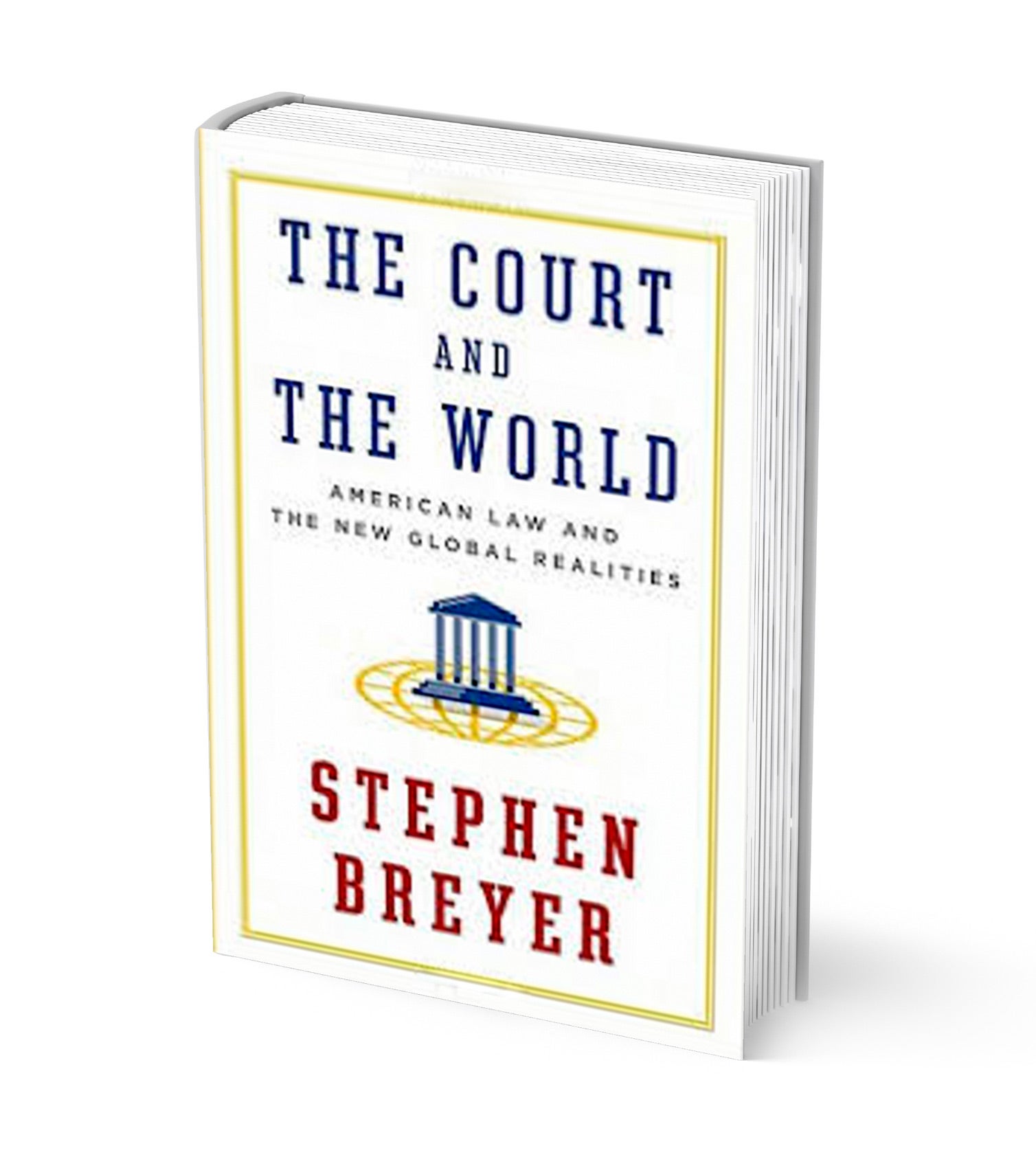“Wisdom From a Chair: Thirty Years of Quadriplegia,” by Andrew I. Batavia ’84 and Mitchell Batavia (BookLocker.com)

Drew Batavia intended to publish his memoir on the 30th anniversary of his spinal cord injury from a car accident when he was 16. But only a few months beforehand, on Jan. 6, 2003, he died from an infection. His brother, Mitchell, has completed the memoir of a man depicted as Don Quixote in a wheelchair, on a mission to improve the lives of people with disabilities (he served as executive director of the National Council on Disability and wrote regulations for the Americans with Disabilities Act) and to ensure that all people “have greater choices in and control over their lives.” Drew’s writing, often witty and self-deprecating, includes details about his rehabilitation, his experience at HLS, and his work at the Department of Justice, with Mitchell offering additional commentary and recollections.
“The Curve: A Novel,” by Jeremy Blachman ’05 and Cameron Stracher ’87 (Ankerwycke)

In this satirical novel, the students at the fictional Manhattan Law School are graded on quite an unusual curve: a “pay for an A” scheme whereby students can purchase their grades from a corrupt staff. A new professor, an HLS grad who left legal practice to become “a dartboard on which the students flung their disdain,” must figure out how to save the school and his own career. With tongue firmly in cheek, the writers enjoy spoofing a legal academy replete with dimwits, reprobates and even a few people worth rooting for.
“The Court and the World: American Law and the New Global Realities,” by Stephen Breyer ’64 (Knopf)

According to Breyer, justice on the U.S. Supreme Court, the Court must increasingly consider foreign persons and activities, from issues of national security to commerce on the Internet. Because of this, he writes, “there is an ever-growing need for American courts to develop an understanding of, and working relationships with, foreign courts and legal institutions.” Addressing foreign threats to national security, Breyer discusses what restraints may be necessary to protect citizens—and which institution should decide on the limits. The Supreme Court recently has refused to provide a “blank check” for presidential power, as shown by cases involving Guantánamo inmates. He writes on statutory law, noting that the Court has moved toward interpreting domestic law in a way that would work in harmony with foreign law. That harmony is even more important with regard to international treaties, he contends. He also considers the role of a judge as a diplomat and how the interplay among judges throughout the world affects the law.
“Imbeciles: The Supreme Court, American Eugenics, and the Sterilization of Carrie Buck,” by Adam Cohen ’87 (Penguin)

Through the backdrop of Buck’s story, Cohen reveals how the most powerful in society embraced a eugenics movement. It culminated in an 8-1 Supreme Court decision in 1927 upholding the commonwealth of Virginia’s ruling to sterilize Buck in order to, as Justice Oliver Wendell Holmes Jr. LL.B. 1866 wrote, “prevent our being swamped with incompetence.” The Court’s decision led to tens of thousands of forced sterilizations in America through the 1980s, and it was cited by the Nazis to defend their own eugenics program. Cohen humanizes the victims and exposes the inhumanity of the intellectuals and leaders responsible for this little-known injustice.
“Chasing the Tape: Information Law and Policy in Capital Markets,” by Onnig H. Dombalagian ’95 (MIT)

Individuals participating in financial markets rely on information to make decisions. In his book, Dombalagian explores the policies that affect how that information flows to the capital markets in the United States. In addition, the professor at Tulane University Law School addresses the role of information in promoting market efficiency and the regulatory regime that governs different types of information. He also considers long-term challenges to regulatory policy in the face of “the deluge of information available in the marketplace” and globalization of markets.
“The White House Vice Presidency: The Path to Significance, Mondale to Biden,” by Joel K. Goldstein (University Press of Kansas)

Denigrated and marginalized throughout U.S. history, the office of the vice president gained newfound influence under Walter Mondale during the Carter administration, and it continues to this day, Goldstein contends. The professor at Saint Louis University School of Law, who also wrote an earlier book on the vice presidency, examines how the change occurred, pointing to earlier and increased vetting of vice presidential candidates and a closer association of vice presidents with the executive branch. The evolution of the office also provides a lesson about “institutional advance and regeneration,” he writes.
“Aging with a Plan: How a Little Thought Today Can Vastly Improve Your Tomorrow,” by Sharona Hoffman ’88 (Praeger)

Motivated by her own experience caring for an older parent—and demographics showing an aging population and a growing number of childless adults—the professor of law and bioethics at Case Western Reserve University offers advice on preparing for loved ones’ and one’s own old age, including choosing retirement communities, preparing legal documents, and taking control of end-of-life decisions. Providing practical checklists covering legal, financial and medical issues, the book emphasizes the value of planning ahead before life circumstances may make decision-making overwhelming.
“To Live Freely in This World: Sex Worker Activism in Africa,” by Chi Adanna Mgbako ’05 (NYU Press)

Mgbako describes the book as “an act of solidarity with the global sex workers movement.” She draws on interviews she conducted in Africa with sex worker activists in seven countries, from Botswana to Nigeria. A clinical professor and director of the Walter Leitner International Human Rights Clinic at Fordham University School of Law, she highlights the challenges and abuses sex workers face, which she argues are linked to criminalization of sex work. But she also celebrates their strength and creativity and “the luminous, defiant social movement they are building.”
“Divergent Paths: The Academy and the Judiciary,” by Richard A. Posner ’62 (Harvard)

Posner points to an increasing gulf between the legal academy and the judiciary. The U.S. Court of Appeals judge writes that law professors have become more specialized and provide less information to judges. He argues that the judicial system needs help, pointing to the uneven quality of judicial appointments and delays in filling them; deficiencies in how judges decide cases and justify their decisions; and problems with management. While acknowledging that the academy can’t solve all judicial problems, Posner proposes improvements such as more collaborative research between law professors and judges, and calls for law schools to modify their curriculum to impart better understanding of judges to law students, including offering courses on the judiciary and on opinion writing (which Posner has taught), and to provide continuing education for judges.
“Harness the Sun: America’s Quest for a Solar-Powered Future,” by Philip Warburg ’86 (Beacon Press)

Solar power was touted in the 1970s as a solution to the energy crisis of the time. The dawn of solar never materialized, but, according to Warburg, it still may. A former president of the Conservation Law Foundation, who wrote a previous book on wind power, he details the increasing use of solar in homes (such as his own outside of Boston), businesses, and even football stadiums. Solar use could reach its potential—supplying a quarter or more of the nation’s energy in a few decades, he writes—with government policies that allow it to compete with other energy sources.
“After Roe: The Lost History of the Abortion Debate” by Mary Ziegler ’07 (Harvard)

Featuring the author’s interviews with more than 100 activists on both sides of the abortion debate as well as archival research, the award-winning book focuses on the decade that followed the 1973 Roe v. Wade Supreme Court decision and how the ruling “became a flash point for deeper struggles about the meaning of human life, sex roles, sexuality, and the role of the judiciary.” Ziegler examines how both sides reacted to the decision and to one another, including efforts to find common ground on an issue many consider insurmountably divisive.
